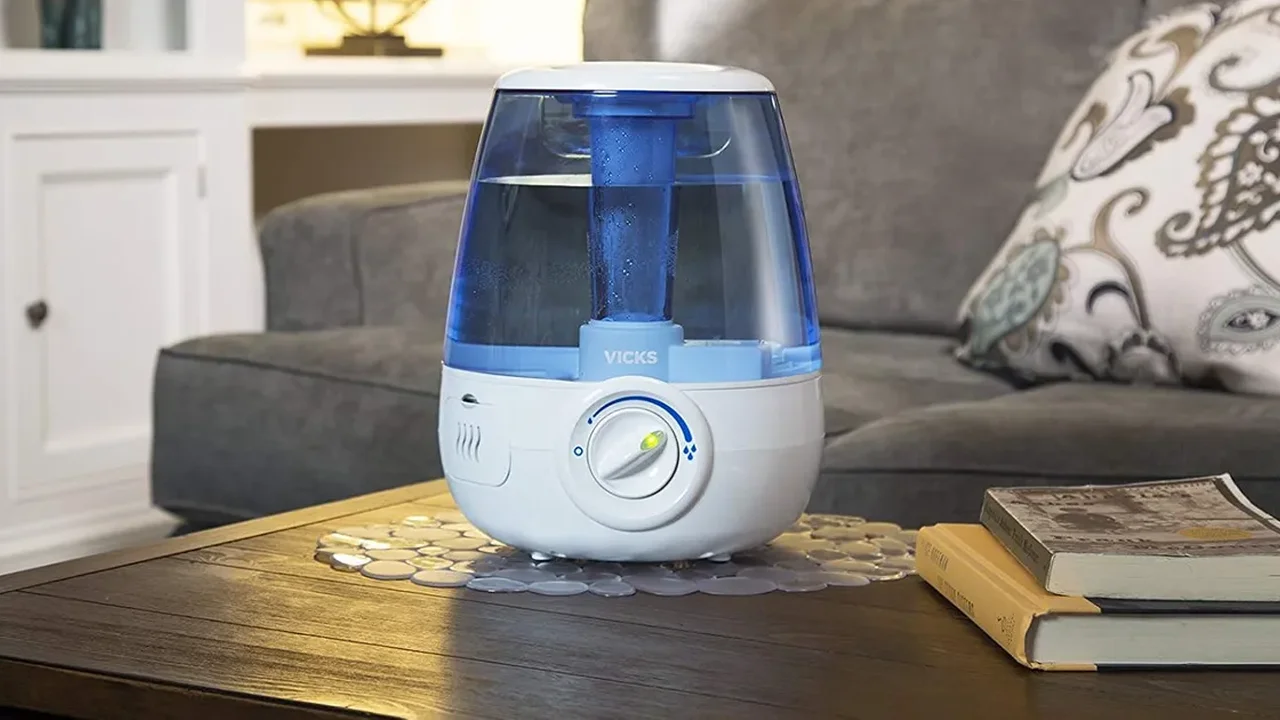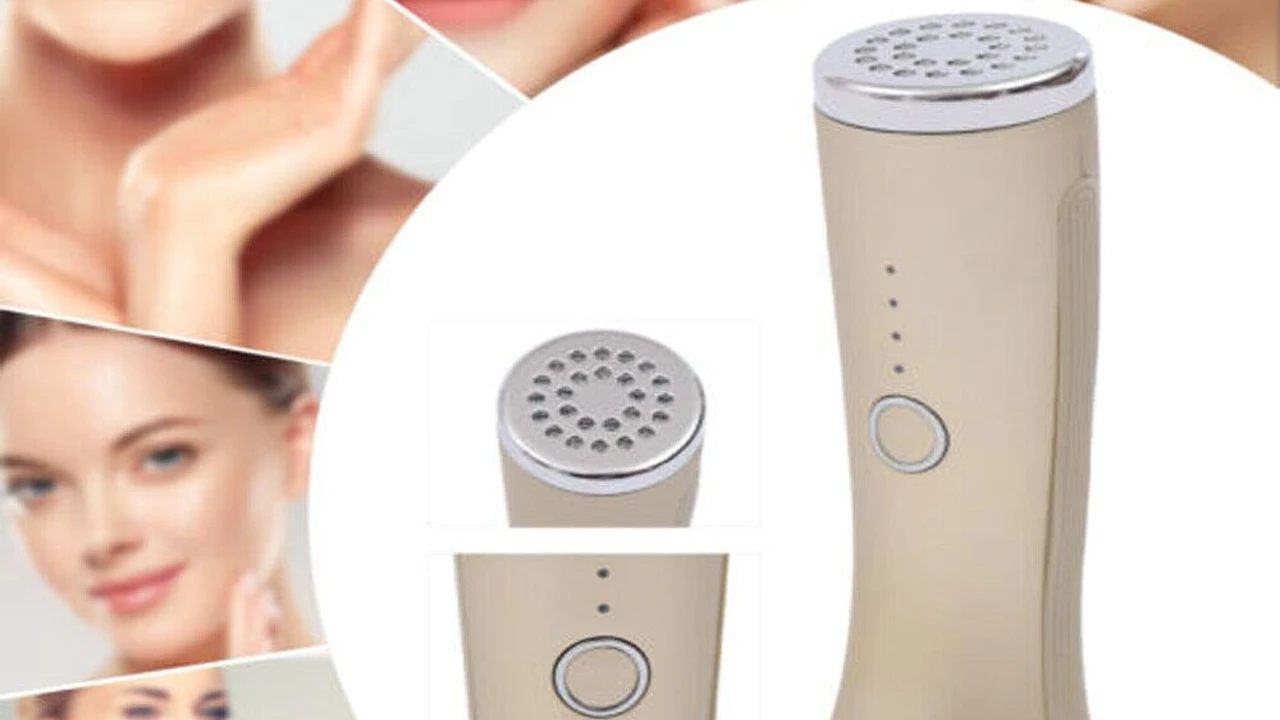The Best Humidifiers and Dehumidifiers for Home
Maintain optimal indoor humidity with the best humidifiers and dehumidifiers. Improve comfort and health in your living space.

Maintain optimal indoor humidity with the best humidifiers and dehumidifiers. Improve comfort and health in your living space.
The Best Humidifiers and Dehumidifiers for Home
Hey there, health enthusiasts and home comfort seekers! Let's talk about something super important for your living space that often gets overlooked: humidity. It's not just about feeling sticky or dry; the right humidity levels can seriously impact your health, comfort, and even the longevity of your home and belongings. We're diving deep into the world of humidifiers and dehumidifiers, exploring why they matter, what to look for, and recommending some top-notch products to help you achieve that perfect indoor climate.
Why Indoor Humidity Matters for Your Health and Home
You might be wondering, why all this fuss about humidity? Well, both too much and too little humidity can cause a whole host of problems. Let's break it down.
The Dangers of Low Humidity Dry Air Issues
When the air in your home is too dry, typically below 30% relative humidity, you'll start to notice it. Your skin might feel itchy and dry, your lips could chap, and your nasal passages might become irritated, leading to nosebleeds or increased susceptibility to colds and flu. Dry air can also exacerbate conditions like asthma and allergies. Beyond your body, dry air can damage your home. Wood furniture, floors, and musical instruments can crack and warp. Static electricity becomes a constant nuisance, and plants might start to wilt.
The Problems with High Humidity Dampness and Mold Risks
On the flip side, if your indoor humidity is consistently above 60%, you're inviting a different set of issues. High humidity creates a breeding ground for mold, mildew, dust mites, and bacteria. These can trigger allergies, asthma attacks, and other respiratory problems. You might notice a musty smell, condensation on windows, or even water stains on walls and ceilings. High humidity can also make your home feel warmer and stickier than it actually is, forcing your air conditioner to work harder and increasing energy bills. It can also damage electronics, books, and even structural elements of your home.
Optimal Humidity Levels The Sweet Spot for Comfort and Health
So, what's the ideal range? Most experts agree that maintaining indoor relative humidity between 40% and 50% is the sweet spot. This range is comfortable for most people, helps prevent the growth of mold and dust mites, and protects your home and belongings from damage. A hygrometer, a device that measures humidity, is a great tool to have to keep an eye on your levels.
Humidifiers Your Solution for Dry Air
If you're battling dry air, a humidifier is your best friend. These devices add moisture to the air, making your home more comfortable and healthier. There are a few main types, each with its own pros and cons.
Types of Humidifiers Cool Mist Warm Mist Ultrasonic Evaporative
- Cool Mist Humidifiers: These are popular, especially for homes with children or pets, as they don't use a heating element. They typically use a fan to blow air through a wick filter, evaporating water into a fine mist. They're generally safer and more energy-efficient.
- Warm Mist Humidifiers: These use a heating element to boil water, producing a warm, sterile mist. The boiling process kills bacteria and mold, making the mist very clean. However, they can be a burn hazard and use more energy.
- Ultrasonic Humidifiers: These use high-frequency vibrations to create a super-fine mist. They are very quiet and don't use a fan, making them ideal for bedrooms. They can produce a fine white dust if you use hard water, so distilled water is often recommended.
- Evaporative Humidifiers: Similar to cool mist, these use a wick filter to absorb water, and a fan blows air over the wick, causing the water to evaporate naturally. They are self-regulating, meaning they won't over-humidify a room, and are generally energy-efficient.
Key Features to Look for in Humidifiers Tank Size Coverage Area Smart Features
- Tank Size and Run Time: Consider how often you want to refill the tank. Larger tanks mean longer run times.
- Coverage Area: Humidifiers are rated for specific room sizes. Make sure the model you choose is appropriate for the space you intend to use it in.
- Humidistat: This built-in sensor automatically turns the humidifier on and off to maintain your desired humidity level. It's a must-have for convenience and energy efficiency.
- Filter Type and Maintenance: Some humidifiers require regular filter replacement, which adds to ongoing costs. Consider models with washable filters or no filters at all.
- Noise Level: Especially important if you plan to use it in a bedroom or office. Ultrasonic models are generally the quietest.
- Smart Features: Wi-Fi connectivity, app control, and integration with smart home systems can offer greater convenience and control.
Top Humidifier Recommendations for Different Needs
Best Overall Humidifier Levoit LV600HH Hybrid Ultrasonic Humidifier
Why it's great: The Levoit LV600HH is a fantastic all-rounder, offering both warm and cool mist options. It has a large 6-liter tank, providing up to 36 hours of continuous operation, perfect for large rooms up to 750 sq ft. It features a built-in humidistat, a remote control, and a quiet operation, making it ideal for bedrooms and living areas. The top-fill design makes refilling a breeze, and it has an essential oil tray for aromatherapy.
Use Case: Ideal for large living rooms, master bedrooms, or open-plan spaces where you need consistent humidity and the flexibility of warm or cool mist. Great for those suffering from dry skin, allergies, or frequent colds.
Price Range: Mid-range, typically around $80-$100 USD.
Best Budget Humidifier Honeywell HUL520B Cool Mist Humidifier
Why it's great: If you're looking for an affordable yet effective option, the Honeywell HUL520B is a solid choice. It's a compact cool mist humidifier, perfect for small to medium-sized rooms. It's incredibly quiet, easy to clean, and has a decent run time for its size. While it lacks advanced features like a humidistat, its simplicity and reliability make it a great value.
Use Case: Perfect for a child's bedroom, a small office, or a guest room where you need basic, reliable humidification without breaking the bank.
Price Range: Budget-friendly, typically around $30-$40 USD.
Best Smart Humidifier Govee Smart Humidifier H7141
Why it's great: For tech-savvy users, the Govee Smart Humidifier offers excellent smart home integration. You can control it via the Govee Home app, set schedules, and even connect it to Alexa or Google Assistant. It's an ultrasonic cool mist humidifier with a large tank and a built-in humidistat, ensuring precise humidity control. It also has an essential oil diffuser and a night light.
Use Case: Ideal for smart homes where you want seamless control over your humidity levels, or for those who appreciate the convenience of app-based management and voice commands.
Price Range: Mid-range, typically around $70-$90 USD.
Best Whole House Humidifier AprilAire 700 Whole-House Humidifier
Why it's great: For comprehensive humidity control throughout your entire home, a whole-house humidifier integrated with your HVAC system is the way to go. The AprilAire 700 is a top-rated bypass humidifier that automatically adds humidity to your home's air as it circulates through your heating and cooling system. It's highly efficient and requires professional installation but provides superior, consistent humidity levels across all rooms.
Use Case: Best for homeowners looking for a permanent, low-maintenance solution to dry air throughout their entire house, especially in regions with harsh, dry winters.
Price Range: High-end, typically $200-$400 USD for the unit, plus installation costs.
Dehumidifiers Your Solution for Damp Air
If your home feels perpetually damp, smells musty, or you're seeing signs of mold, a dehumidifier is what you need. These devices remove excess moisture from the air, creating a drier, healthier environment.
Types of Dehumidifiers Compressor Desiccant Whole House
- Compressor Dehumidifiers: These are the most common type. They work similarly to a refrigerator, drawing air over a cold coil to condense moisture, which then drips into a collection bucket. They are very effective in warm, humid conditions.
- Desiccant Dehumidifiers: These use a desiccant material (like silica gel) to absorb moisture from the air. They are more effective in cooler temperatures and are often quieter than compressor models, but can be less energy-efficient in very warm conditions.
- Whole-House Dehumidifiers: Similar to whole-house humidifiers, these integrate with your HVAC system to remove moisture from the air circulating throughout your entire home. They offer the most comprehensive and consistent dehumidification.
Key Features to Look for in Dehumidifiers Pint Capacity Drainage Options Energy Star Rating
- Pint Capacity: Dehumidifiers are rated by how many pints of moisture they can remove from the air in 24 hours. This capacity should match the size of your space and the level of humidity. For example, a 30-pint unit is good for a small, moderately damp room, while a 50-pint or 70-pint unit is better for larger, very damp spaces or basements.
- Coverage Area: Ensure the dehumidifier is rated for the square footage of the room or area you need to dehumidify.
- Drainage Options: Most dehumidifiers have a collection bucket that needs to be emptied manually. Many also offer a continuous drainage option, allowing you to connect a hose to a floor drain, which is incredibly convenient for basements or very humid areas.
- Humidistat: Just like with humidifiers, a built-in humidistat is crucial for automatically maintaining your desired humidity level and saving energy.
- Energy Star Rating: Look for Energy Star certified models, as they are more energy-efficient and will save you money on electricity bills in the long run.
- Noise Level: Dehumidifiers can be noisy due to their compressors. Check reviews for noise levels, especially if you plan to use it in a living area or bedroom.
- Portability: Wheels and handles make it easier to move the unit between rooms if needed.
Top Dehumidifier Recommendations for Different Needs
Best Overall Dehumidifier GE ADEL50LR Dehumidifier 50 Pint
Why it's great: The GE ADEL50LR is a highly-rated 50-pint dehumidifier that excels in performance and features. It's effective for large rooms and basements, offering continuous drainage, a built-in humidistat, and a relatively quiet operation for a compressor unit. It's also Energy Star certified, ensuring efficient operation. The integrated pump model (ADEL50LRL1) is even better for continuous drainage to a higher drain.
Use Case: Perfect for damp basements, large living areas, or any space prone to high humidity and mold growth. Its robust capacity handles significant moisture removal.
Price Range: Mid-range to high-end, typically around $250-$300 USD.
Best Dehumidifier for Basements and Large Spaces Frigidaire FFAD7033R1 70 Pint Dehumidifier
Why it's great: For very damp basements or large, humid areas, the Frigidaire FFAD7033R1 is a powerhouse. This 70-pint unit can handle extreme moisture, making it ideal for flood-prone areas or consistently damp environments. It features a continuous drain option, a washable filter, and a full-tank alert with automatic shut-off. It's also Energy Star certified.
Use Case: Essential for very damp basements, large garages, or any expansive area where significant moisture removal is required. Its high capacity ensures effective control even in challenging conditions.
Price Range: High-end, typically around $300-$350 USD.
Best Quiet Dehumidifier hOmeLabs HME020006N 1,500 Sq Ft Energy Star Dehumidifier
Why it's great: While no dehumidifier is completely silent, the hOmeLabs unit is known for being one of the quieter compressor models available. It's a 35-pint (new DOE standard, equivalent to old 50-pint) unit, suitable for medium to large rooms. It's Energy Star certified, has a sleek design, and offers continuous drainage. Its quiet operation makes it more suitable for living spaces than some other models.
Use Case: Ideal for living rooms, bedrooms, or open-concept areas where noise is a concern but effective dehumidification is still needed. Great for maintaining comfort without constant background hum.
Price Range: Mid-range, typically around $200-$250 USD.
Best Small Space Dehumidifier Pro Breeze Electric Mini Dehumidifier 2200 Cubic Feet
Why it's great: For small spaces like bathrooms, closets, RVs, or small bedrooms, a mini-dehumidifier like the Pro Breeze is a compact and affordable solution. It uses Peltier technology (thermo-electric cooling) which makes it very quiet and energy-efficient, though less powerful than compressor models. It's designed for very small areas and removes a small amount of moisture daily.
Use Case: Perfect for small, enclosed spaces where a full-sized dehumidifier would be overkill. Think walk-in closets, small bathrooms without proper ventilation, or even inside a safe to protect documents from moisture.
Price Range: Budget-friendly, typically around $50-$70 USD.
Comparing Humidifiers and Dehumidifiers Which One Do You Need
It's not always about choosing one over the other; sometimes, you might need both, just at different times of the year or in different areas of your home. Here's how to decide.
Seasonal Needs Winter Dryness Summer Humidity
Generally, humidifiers are most needed in the winter months, especially in regions with cold, dry climates. Heating systems tend to dry out the air, making humidifiers essential for comfort and health. Dehumidifiers, on the other hand, are typically used in warmer, more humid months, or in consistently damp areas like basements, regardless of the season. If you live in a climate with distinct seasons, you might find yourself swapping between the two.
Regional Climate Considerations Arid vs Tropical Climates
Your geographical location plays a huge role. If you live in an arid climate (like the desert Southwest of the US), a humidifier will likely be a year-round necessity. If you're in a tropical or subtropical region (like Southeast Asia or the American South), a dehumidifier will be your constant companion to combat high humidity and prevent mold.
Specific Room Requirements Basements Bedrooms Living Areas
Consider the specific needs of each room. Basements are notorious for dampness, so a dedicated dehumidifier is often a wise investment there. Bedrooms, especially for those with allergies or respiratory issues, might benefit from a quiet humidifier in winter. Living areas might need a larger capacity unit, whether it's a humidifier or dehumidifier, depending on your climate and home's construction.
Maintenance Tips for Optimal Performance and Longevity
To ensure your humidifier or dehumidifier works effectively and lasts a long time, regular maintenance is key. Neglecting cleaning can lead to mold growth in humidifiers or reduced efficiency in dehumidifiers.
Cleaning Your Humidifier Preventing Mold and Bacteria Buildup
Humidifiers, especially cool mist and ultrasonic models, can become breeding grounds for mold and bacteria if not cleaned regularly. Aim to clean your humidifier every few days, or at least once a week. Use a mixture of white vinegar and water to disinfect the tank and base, and scrub away any mineral buildup. Rinse thoroughly before refilling. Replace filters as recommended by the manufacturer.
Cleaning Your Dehumidifier Maintaining Efficiency and Air Quality
Dehumidifiers also require regular cleaning. Empty the water bucket frequently to prevent mold growth. Clean the air filter every few weeks (or more often if you have pets or a dusty environment) by rinsing it with warm, soapy water or vacuuming it. Periodically, you might need to clean the coils with a soft brush or vacuum attachment to remove dust and debris, which can impede efficiency.
Filter Replacement Schedules and Water Quality Considerations
Always follow the manufacturer's recommendations for filter replacement. Some humidifiers benefit from distilled water, especially ultrasonic models, to prevent white dust. For dehumidifiers, ensuring the air filter is clean is paramount for both efficiency and the quality of the air being processed.
Advanced Biohacking for Indoor Air Quality Beyond Humidity Control
While humidifiers and dehumidifiers are crucial for humidity control, optimizing your indoor air quality is a multi-faceted approach. Let's touch on some other biohacking strategies.
Air Purifiers Complementing Humidity Control for Clean Air
Air purifiers remove airborne particles like dust, pollen, pet dander, and even some viruses and bacteria. They are an excellent complement to humidity control, especially for allergy and asthma sufferers. Look for models with HEPA filters for particle removal and activated carbon filters for odors and VOCs.
Ventilation Strategies Fresh Air Exchange and Circulation
Proper ventilation is vital. Opening windows regularly, even for a few minutes, can help exchange stale indoor air with fresh outdoor air. Exhaust fans in bathrooms and kitchens are also important for removing moisture and pollutants at the source. Consider energy recovery ventilators (ERVs) or heat recovery ventilators (HRVs) for more advanced whole-house ventilation that minimizes energy loss.
Indoor Plants Natural Air Filters and Humidity Regulators
Certain indoor plants can act as natural air purifiers, absorbing toxins and releasing oxygen. Some, like spider plants or peace lilies, can also help regulate humidity levels to a small extent. They add a touch of nature and can improve your overall well-being.
Monitoring Indoor Air Quality Smart Sensors and Data Tracking
For the ultimate biohacking approach, consider investing in smart indoor air quality monitors. These devices track various parameters like humidity, temperature, VOCs, particulate matter (PM2.5), and CO2 levels. They can provide real-time data and alerts, allowing you to make informed decisions about when to use your humidifier, dehumidifier, or open a window. Brands like Airthings and Awair offer excellent smart monitors.
Achieving optimal indoor humidity is a cornerstone of a healthy and comfortable home. Whether you're battling dry winter air or humid summer stickiness, the right humidifier or dehumidifier can make a world of difference. By understanding your needs, choosing the right product, and maintaining it properly, you're well on your way to creating a truly biohacked living space that supports your health and well-being year-round. So go ahead, take control of your indoor climate, and breathe easier!
:max_bytes(150000):strip_icc()/277019-baked-pork-chops-with-cream-of-mushroom-soup-DDMFS-beauty-4x3-BG-7505-5762b731cf30447d9cbbbbbf387beafa.jpg)






